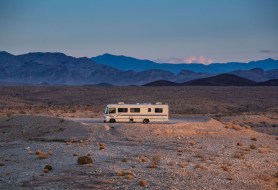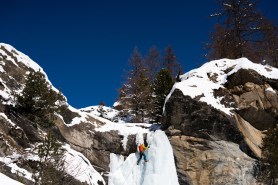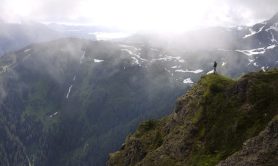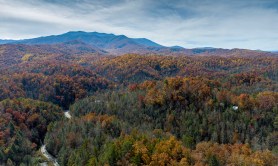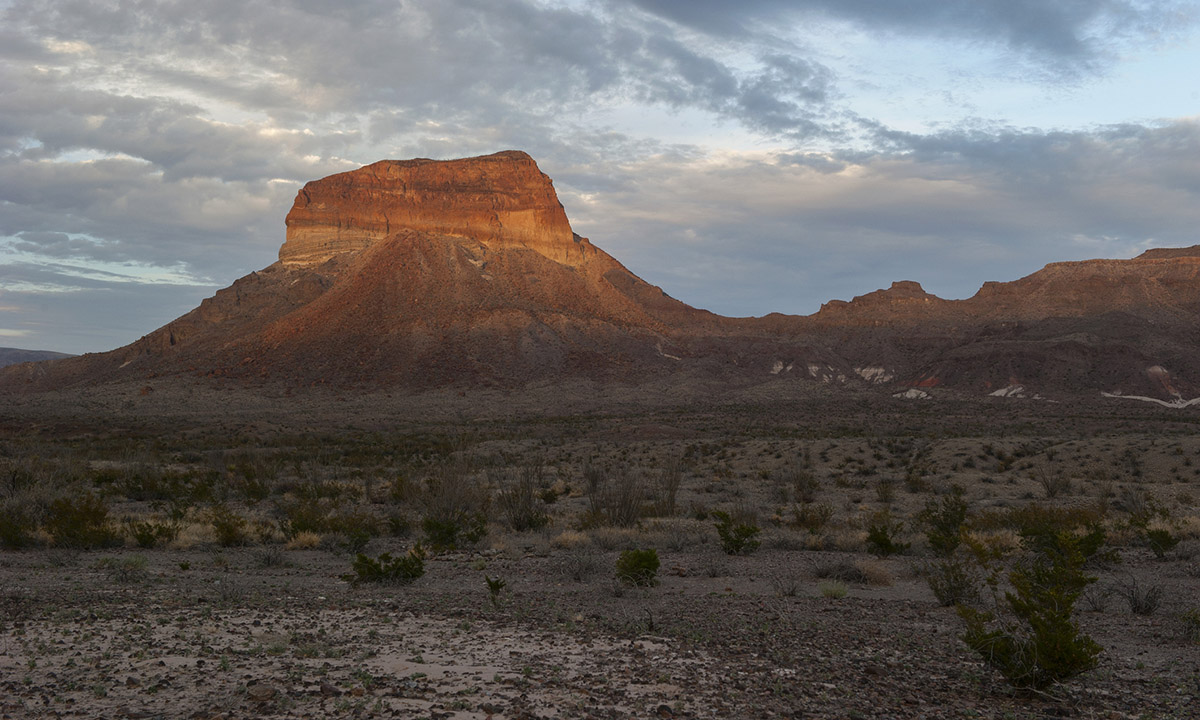

Despite the massive size of Texas, there are only two national parks in the Lone Star State: Big Bend National Park and Guadalupe Mountains National Park. It will take at least a day to drive to both parks from the major Texas cities of Houston, Dallas, San Antonio, and Austin, but the long journey is well worth the time.
Videos by Outdoors with Bear Grylls
The drive between Guadalupe and Big Bend takes four-and-a-half hours, so it’s possible to visit both by embarking on a true Texan adventure.
Big Bend is full of incredible vistas—from the peaks of the Chisos Mountains to the sands of the Chihuahuan Desert. The Rio Grande flows along the southern boundary for 118 miles, forming the border between the United States and Mexico.
Guadalupe Mountains is the smaller of the two parks in terms of area, but it boasts the tallest mountain peaks in Texas. Rugged, remote, and slightly under-rated, its deep canyons and mountainous trails skirt the border with New Mexico.
Let’s venture out west and discover the remote wilderness of Texas’ two national parks and what to do when you get there.
Big Bend National Park

If you’re looking for invigorating trails leading to gorgeous viewpoints and pristine night skies, Big Bend National Park has you covered.
With its thorny terrain, laced with exotic cacti and yucca plants, the wild scenery offers a huge variety of hiking options, including mountain, river, and desert trails.
A standard entrance pass to Big Bend National Park costs $30 per vehicle.
What to Do
Emery Peak: 10.5 miles
The highest peak in the Chisos mountain range and Big Bend, Emory Peak, measures a lofty 2,440 feet. Reaching the summit is a strenuous endeavor, with elevation gaining as you progress along the trail. You’ll be rewarded with 360-degree views from the top, overlooking the Chihuahuan Desert and the Chisos Mountains.
There are a couple of ways to reach the top. Take the direct route, or you can make a day of it and explore the South Rim Trail, which can include a detour to the mountain peak.
The Lost Mine Trail: 4.8 miles
If you only have time for one hike, the Lost Mine Trail is a great choice. With an elevation of 1,000 feet, it’s no gentle saunter, but it will only take about three hours (or less) out of your day. With otherworldly landscapes and incredible views along the way, make sure to stop for breaks to take it all in. There are beautiful wildflowers and cool cacti to spot as you traverse the trail.
The Chimneys Trail: 4.8 miles
A desert hike is an essential component of the Big Bend experience. The rivers and mountains are amazing, but the sandy terrain offers something a little different, with diverse animal and plant life to admire. The Chimney’s Trail explores a series of volcanic formations, known as “the chimneys,” which were a point of reference for the people who once lived here. You can see perfectly preserved rock art from these times. The trail is mostly flat, but there is no shade, so be careful in the heat of the sun.
The Window Trail: 5.5 miles
The Window Trail follows the basin of an old river system, the Oak Creek Canyon. It eventually leads to “the window,” a rock formation carved out by the old river that in its past gave way to a waterfall. From here, you can admire the national park in all its magnificence. The terrain changes along the way, from sandy desert to alpine forest. At 5.5 miles, it’s a short out-and-back trail. However, the first section is downhill and the return is all uphill, so be sure to carry enough water and preserve energy for the way back.
The Rio Grande
The Rio Grande trickles from the snow melts of the Colorado River all the way down to the Gulf of Mexico. It forms the southern boundary between Big Bend and the international border with Mexico.
The river not only creates beautiful scenery and wild habitats but also endless opportunities for adventure.
Hire a canoe or water raft from Desert Sports in Terlingua and float along beautiful canyons and rapids. The company offers several day trips and river tours to choose from.
Find some relaxation with a visit to the Hot Springs, a natural hot spring with waters reaching up to 105°F, following a short 1-mile hike.
Follow the Rio Grande along the Santa Elena Canyon Trail and enjoy one of the prettiest trails in the park. The trail only takes about an hour, and it crosses the bubbling Terlingua Creek before ascending up some steps to a spectacular viewpoint.
Where to Eat

Just outside the boundaries of Big Bend, the Terlingua Ghost Town is a fascinating place to visit. In this abandoned mining village, you’ll find several restaurants, including the Starlight Theatre and Saloon and Taqueria El Milagro, a great spot for tacos.
The dusty town is atmospheric, with a cemetery dating back to 1901. There are a couple of accommodation options available to book in the town, but be sure to plan far in advance, as they are very popular.
Grab your passport before you leave. It’s possible to cross the Mexican border by small row-boat ferry for the day to explore the small village of Boquillas Del Carmen, which has souvenir shops, two restaurants, and a bar.
Where to Stay
There are campgrounds, ideal for tent camping, at Rio Grande Village, Chisos Basin, and Cottonwood, which cost $16 per individual campsite per night.
There is a campsite for RVs at Rio Grande Village RV Campground with full hook-ups.
You can also book motel accommodation at the Chisos Mountain Lodge.
When to Visit
The summer months can be unbearably hot in this part of Texas, so the best time to visit Big Bend is in the spring, fall, or winter months.
In the spring, you will experience average highs in the 80s and lows in the 50s and 60s (Fahrenheit).
Guadalupe Mountains National Park
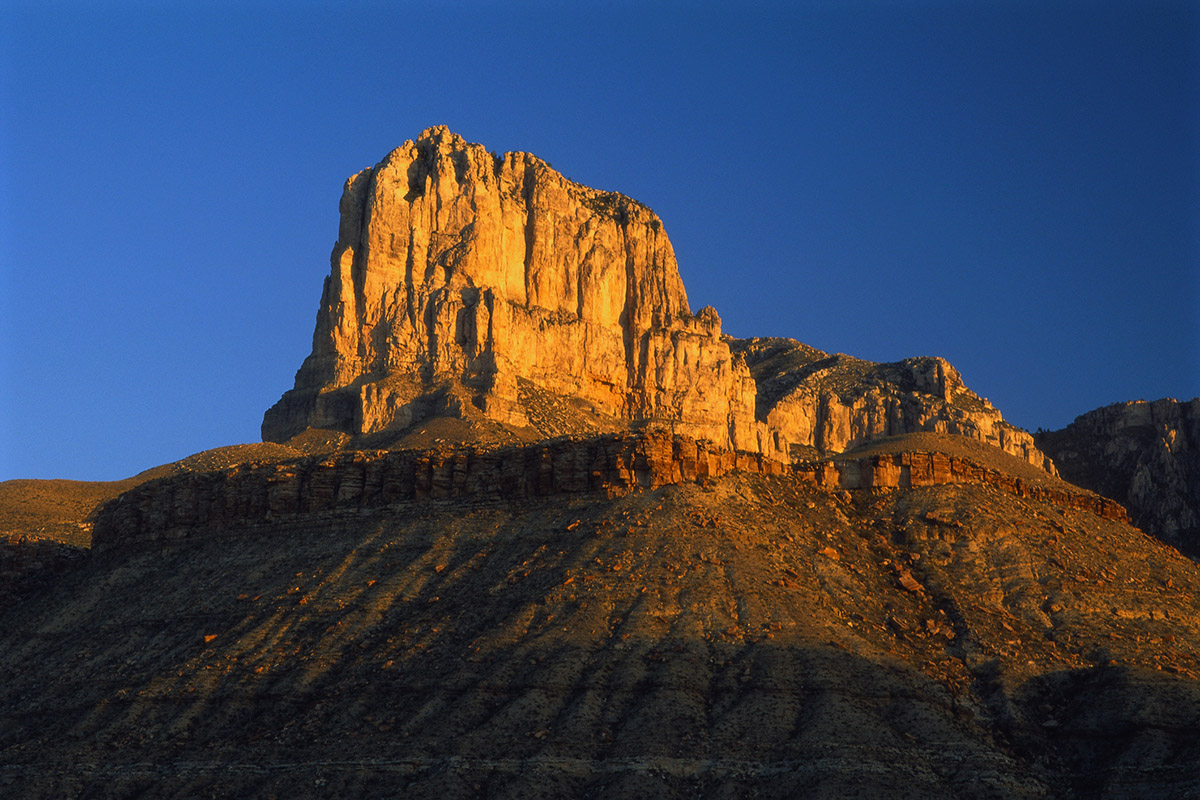
Please note that Guadalupe National Park is currently closed for wildfires as of 7/28/2023.
The Guadalupe Mountains National Park has fascinated geologists for generations. It forms part of an area known as the Permian Basin, and many people have lived here and studied its fossils and formation, leaving us with intriguing human history to discover across the park.
Its stark natural beauty makes it a memorable place to visit. The almost-empty mountainous trails, made up of salt basins, sand dunes, and lots of native plants and wildlife allow for a true wilderness experience. It even features the highest mountain peak in Texas.
A standard entrance pass to Guadalupe National Park costs $10 per vehicle.
What to Do
Guadalupe Peak: 8.4 miles
Standing at 8,749 feet, the Guadalupe Peak is the pinnacle of the national park, and it’s worth the day-long climb just to say you’ve reached the top of Texas. It’s almost all uphill, with a 3,000-foot elevation gain, so remember to take it slowly.
Keep an eye out for wildlife as you ascend. Snakes, mountain lions, and deer are known to frequent these parts.
It’s also common to find seashells, even at the highest parts of the peak. Millions of years ago, the Guadalupe mountain range was submerged underwater, and the landscape forms part of an ancient fossil reef.
Find an in-depth guide to hiking Guadalupe Peak here.
The Smith Spring: 2.3 miles
One of the easiest hikes in the park is the Smith Spring Trail, which will take you to see two rare water sources within the vast desert. Beginning at the Frijole Ranch Cultural Museum, you can learn about the history of this remote area as you take the 2.3-mile round trip trek. As you hike, admire the mountain peaks and desert before coming across the springs. First, you will notice a small pool of water, the Manzanita Spring. Later, you will venture past the Smith Spring, a peaceful oasis surrounded by vegetation, waterfalls, and wildlife. Both appear slightly out of place amongst miles and miles of dry desert.
El Capitan Viewpoint
Although there is no trail to the summit of El Capitan, its height and towering presence have made it one of the most popular sights to behold in the national park. It’s the southernmost point of the Guadalupe Mountains, and its peak is one of the first things you will notice as you enter the park.
Drive to the El Capitan Lookout at sunrise or sunset to take in the best views from Highway 62/180. The south side of the highway has a better view.
Pratt Cabin Trail: 4.8 miles
Explore the heart of Guadalupe National Park with an adventure into the center of McKittrick Canyon. The Pratt Cabin Trail is one of the most interesting trails within the canyon. With towering rock formations all around and a winding creek to cross, the adventurous trail leads you to the Pratt Cabin. Built in the 1930s, it was the summer home of geologist Wallace Pratt, who later donated it to the National Park Service.
The Permian Reef Trail: 9.2 miles
For an impressive trail, on which you can discover solitude and incredible views, consider the Permian Reef Trail. It’s one of the park’s lesser-known walks, and it explores the edges of McKittrick Canyon, leading you along the top of the Wilderness Ridge. The trail gets its name from the Permian Period—some 260 million years ago—and refers to the geology and fossils from this time, which can be seen along the way.
Where to Stay

If you want to stay overnight in the park, the only option is to camp. This way, you can enjoy the park’s incredible stargazing and be at one with nature.
There are two campgrounds with sites for tents or RVs: Dog Canyon and Pine Springs. Both cost $20 per individual campsite. There are restrooms but no showers or RV hook-ups. Pine Springs is perfectly located to do many of the hikes, and Dog Canyon is a little quieter and more remote. There is also a designated horse camp site at Frijole Horse Corral Campground.
If you’d prefer to stay nearer civilization, the closest place with hotel and restaurant choices would be the city of Carlsbad, New Mexico.
Where to Eat
It’s best to come prepared with your own food and drink. There is nowhere to purchase food and drink within the park.
When to Visit
Guadalupe sits at a higher elevation than Big Bend, allowing for slightly cooler temperatures year-round.
It’s possible to experience milder summers in Guadalupe, with average highs in the 70s (Fahrenheit). The fall and spring are very pleasant and quieter times to visit.
Are you keen to discover more of America’s National Parks? For entrance to all of them, consider purchasing the annual America the Beautiful Pass for $80.
Have you visited one of the national parks in Texas? Tell us your favorite in the comments below.


